Define Transcription
Transcription is a crucial process that occurs in the cell Nucleus, where genetic information encoded in DNA is used to create a complementary RNA molecule. This RNA copy serves as a template for protein synthesis. Imagine DNA as a book containing instructions for building and maintaining the body, with each page representing a gene. During transcription, an enzyme called RNA polymerase reads the DNA code and synthesizes a corresponding RNA strand by matching complementary RNA nucleotides to the DNA template.
It’s like transcribing a recipe from a cookbook onto a separate sheet – the RNA is the recipe copy. This newly formed RNA, known as messenger RNA (mRNA), carries the genetic instructions from the nucleus to the cell’s cytoplasm, where protein synthesis takes place. The mRNA essentially acts as the chef’s notes that guide the kitchen staff (Ribosomes) in assembling the ingredients (amino acids) to create proteins. In summary, DNA transcription is the process of copying genetic information from DNA to RNA, ultimately facilitating the production of proteins essential for various cellular functions.
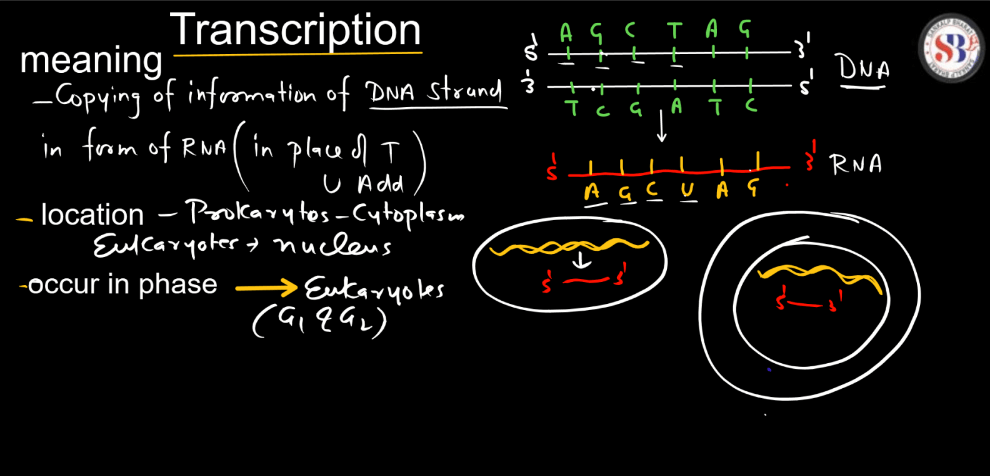
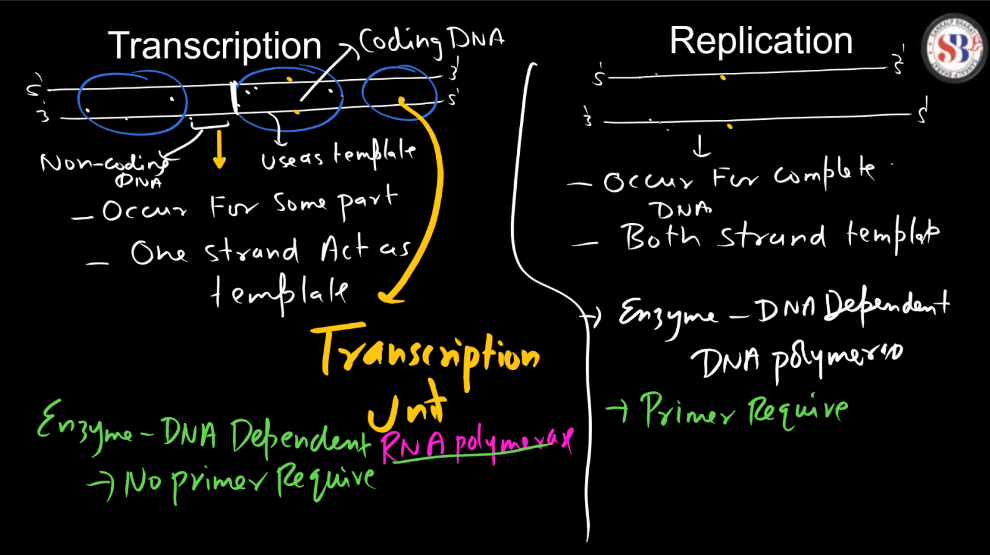
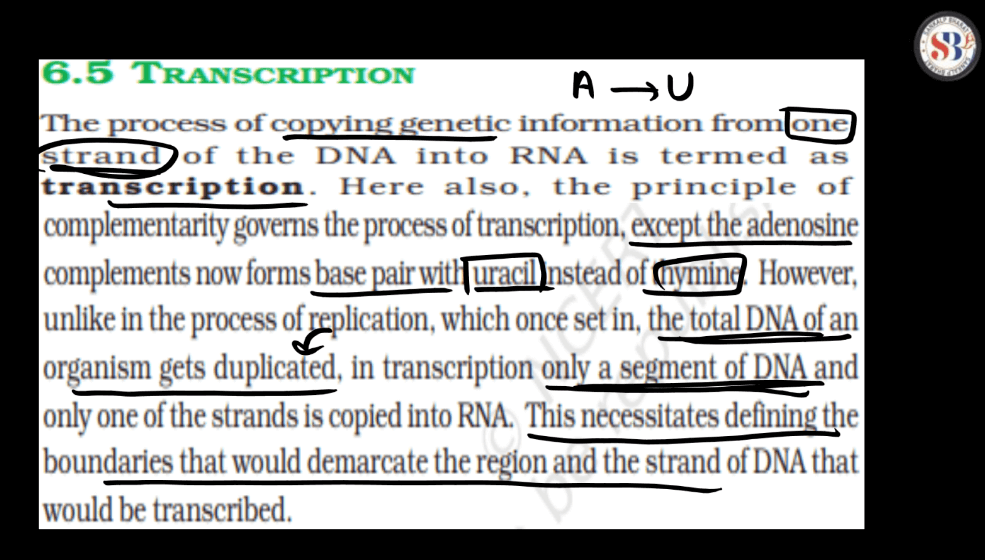
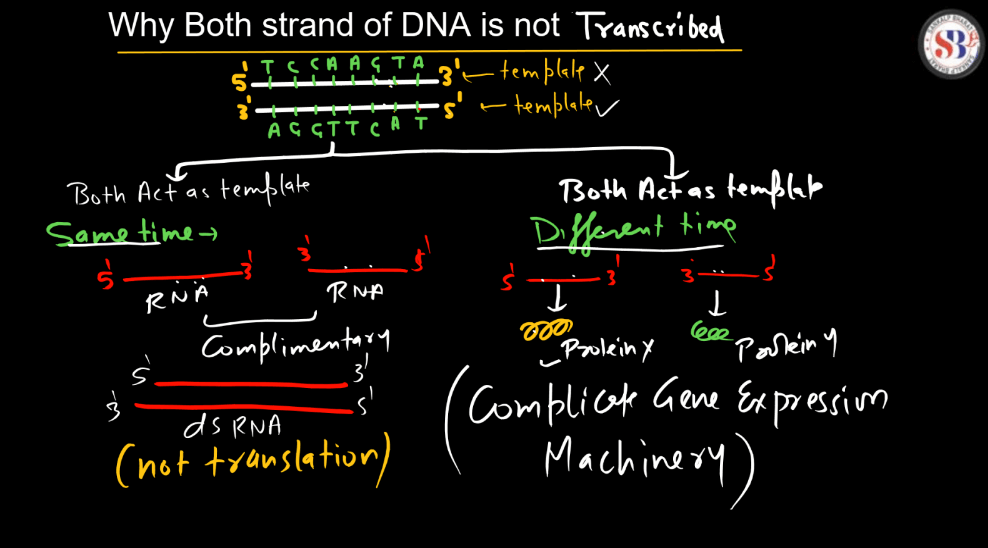
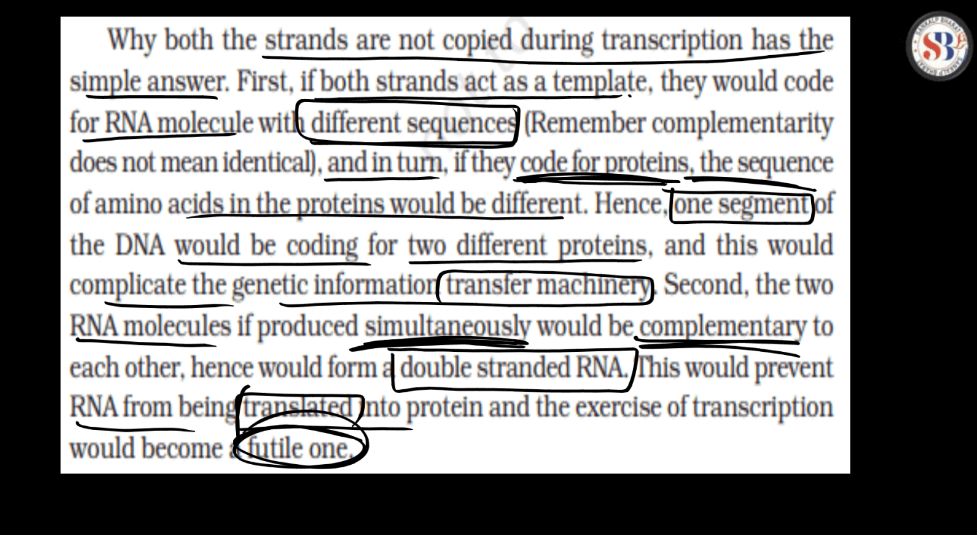
RNA Polymerase
RNA Polymerase is a crucial enzyme responsible for reading and transcribing genetic information from DNA and RNA. Imagine DNA as a blueprint for building and maintaining living organisms. RNA, on the other hand, acts as a manager, carrying instructions from DNA to create proteins. RNA polymerase functions like a molecular copy machine. It unwinds the DNA double helix, exposing a specific section. Then, it reads the DNA sequence and assembles a complementary RNA strand by linking together corresponding RNA building blocks.
This resulting RNA molecule serves as a temporary copy of the genetic instructions encoded in DNA. The process of transcription, driven by RNA polymerase, is essential for gene expression and protein synthesis. Essentially, RNA polymerase plays a vital role in translating the genetic code from DNA into a language (RNA) that the cellular machinery can use to produce the proteins necessary for life.
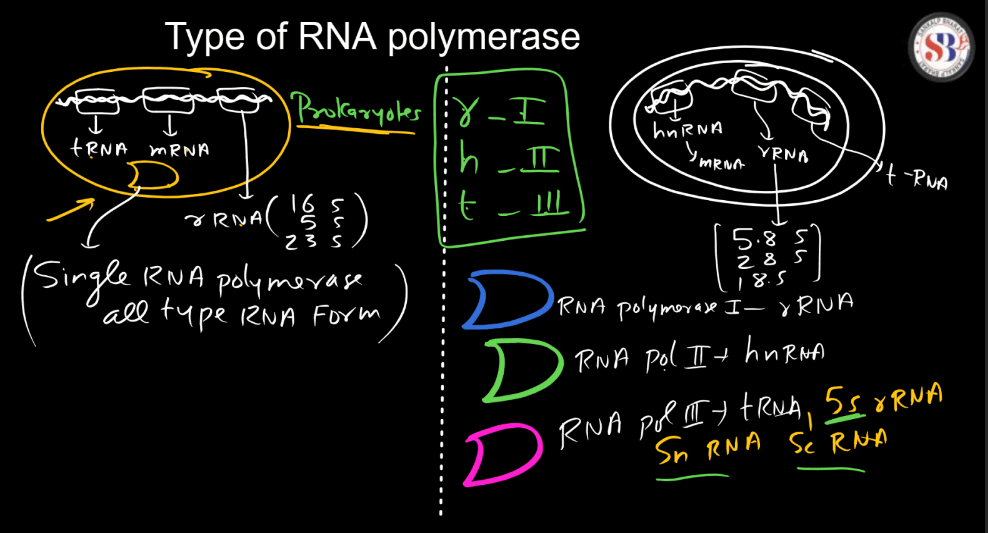
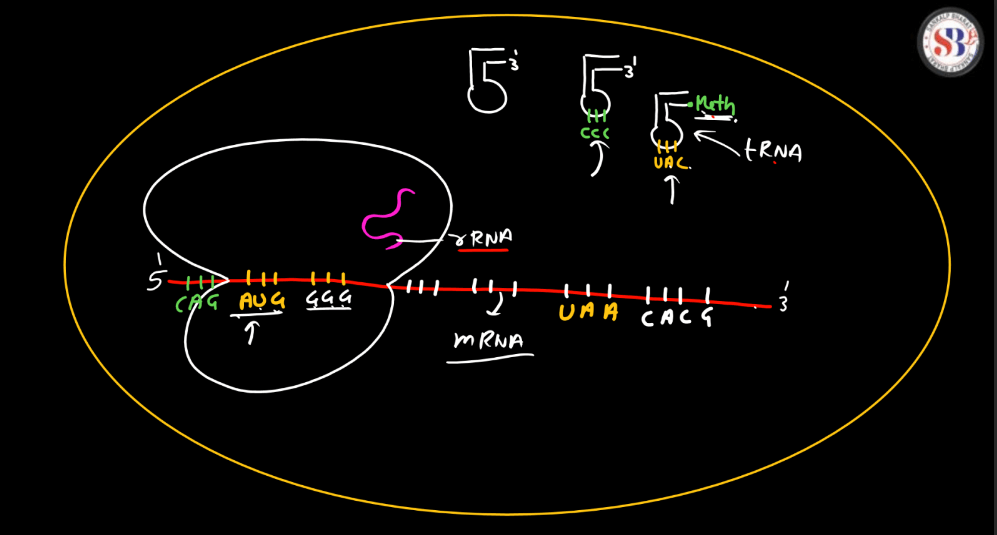
Transcription Unit
A transcription unit in DNA is a segment that includes a gene and the regulatory regions responsible for the initiation and termination of transcription. It consists of a promoter, the gene itself, and a terminator. During transcription, RNA polymerase reads and copies the gene’s DNA sequence into messenger RNA (mRNA) within this unit. A transcription unit in DNA is defined primarily by the three regions in the DNA-
- A Promoter
- The Structural Gene
- The Terminator
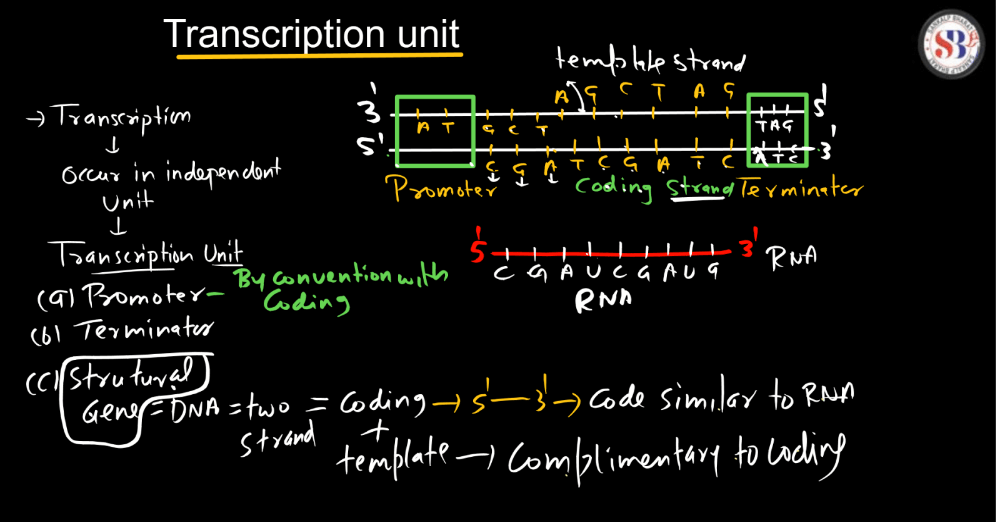
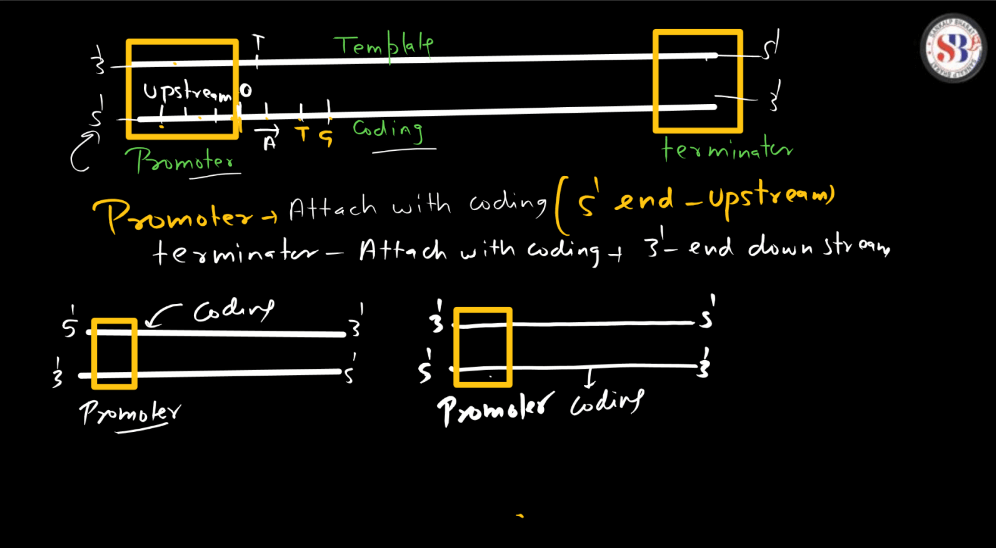
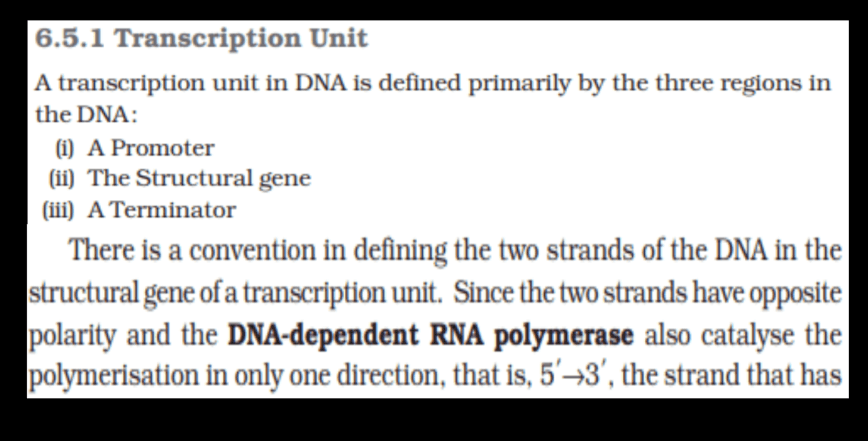

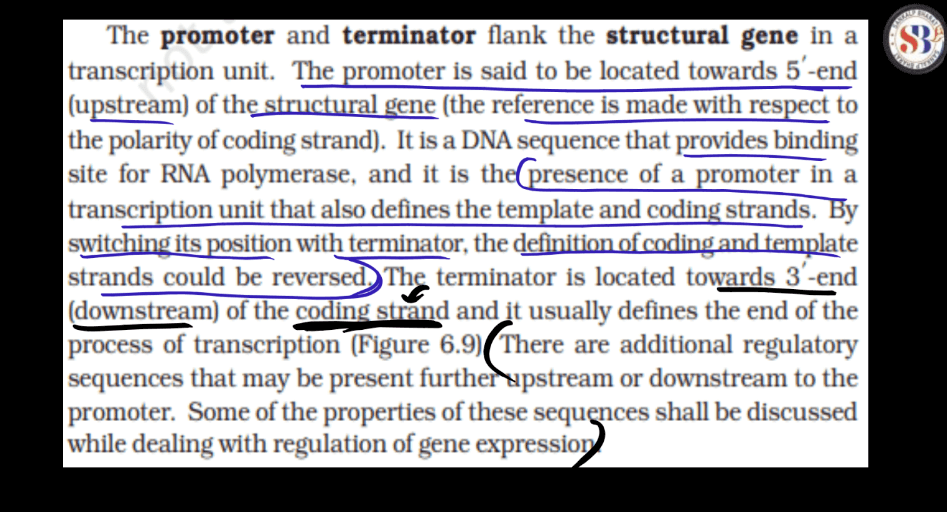
Define the Concept of Gene
Gene is like instructional codes within our cells, carrying information that guides the development and functioning of living organisms. Think of them as the building blocks of life’s instruction manual. These DNA segments provide the blueprint for creating proteins, the molecules that perform essential tasks in the body. Genes are inherited from our parents, shaping our traits and characteristics. Changes in genes, called mutations, contribute to genetic diversity. Studying genes helps us understanding genes helps us understand heredity, evolution, and the basis of many diseases. In essence, genes are the tiny but crucial components that determine much of what makes each living being unique.
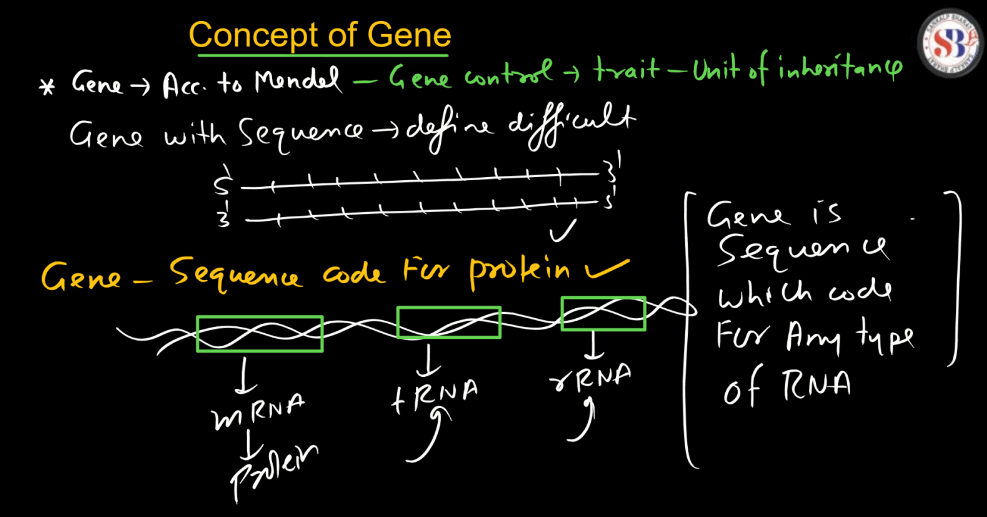
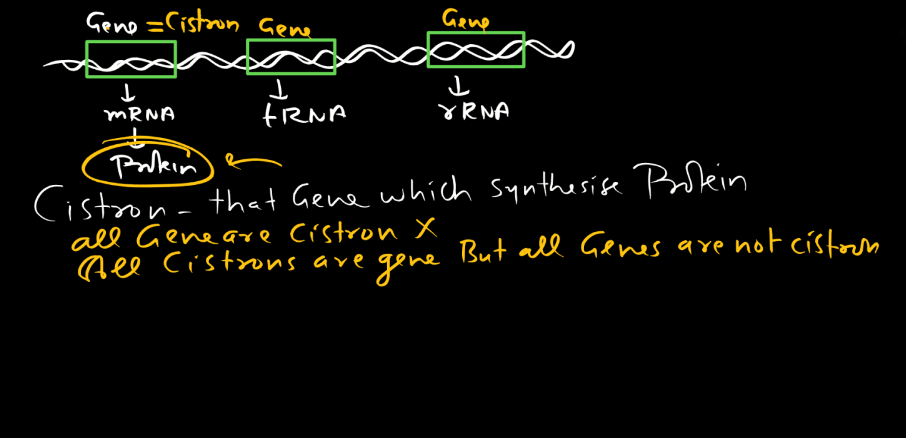
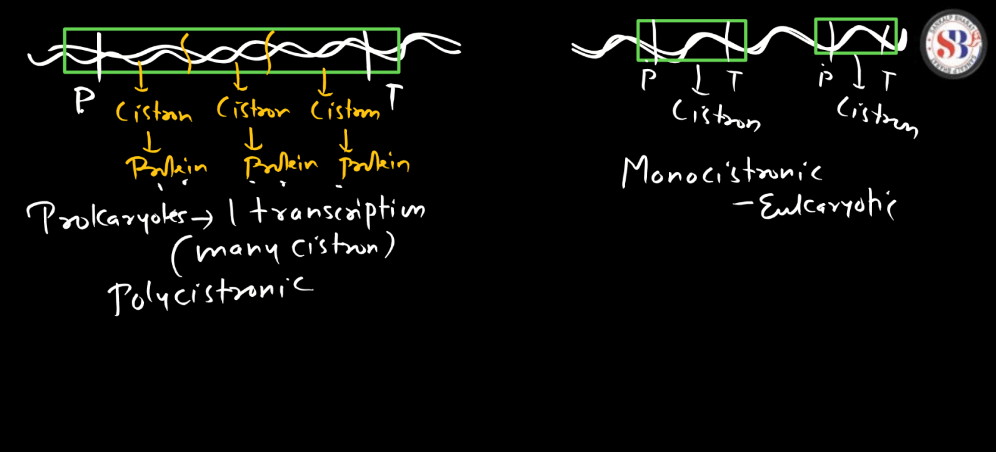
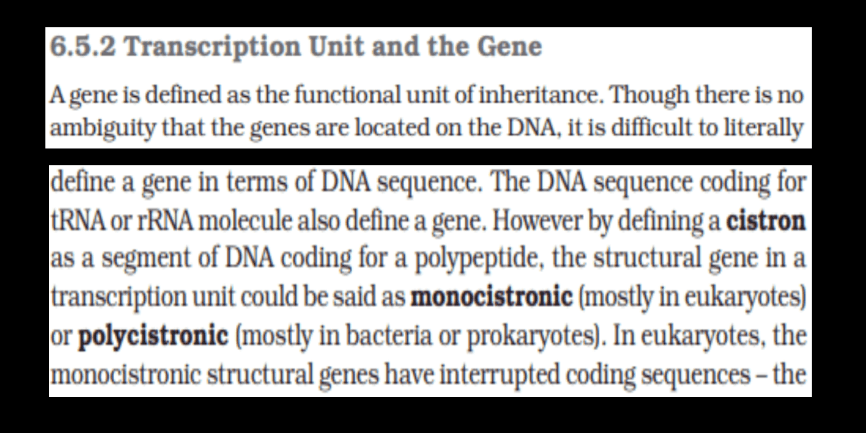
Process of Transcription
Transcription is the process by which genetic information in DNA is used to synthesize RNA. Some of the steps involved in the process of transcription are Initiation, Elongation, Termination, and Processing (in eukaryotes). The result is a mature mRNA molecule that carries the genetic information from the DNA to the ribosomes for translation into proteins.
- Initiation: RNA polymerase binds to the promoter region of DNA, marking the starting point for transcription.
- Elongation: RNA polymerase moves along the DNA template strand, synthesizing a complementary RNA strand by adding nucleotides (A, U, G, C) according to the base pairing rules.
- Termination: Transcription continues until a termination signal is reached. At this point, the RNA polymerase and the newly synthesized RNA molecule detach from the DNA.
- Processing (In Eukaryotes): In eukaryotic cells, the initial RNA transcript (pre-mRNA) undergoes various modifications. These include the addition of a 5′ cap, splicing out introns, and adding a poly-A tail at the 3′ end.
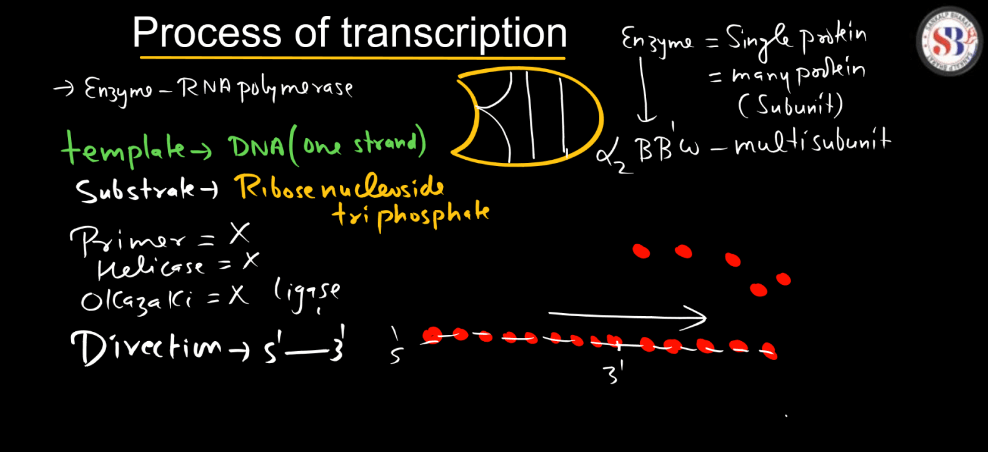
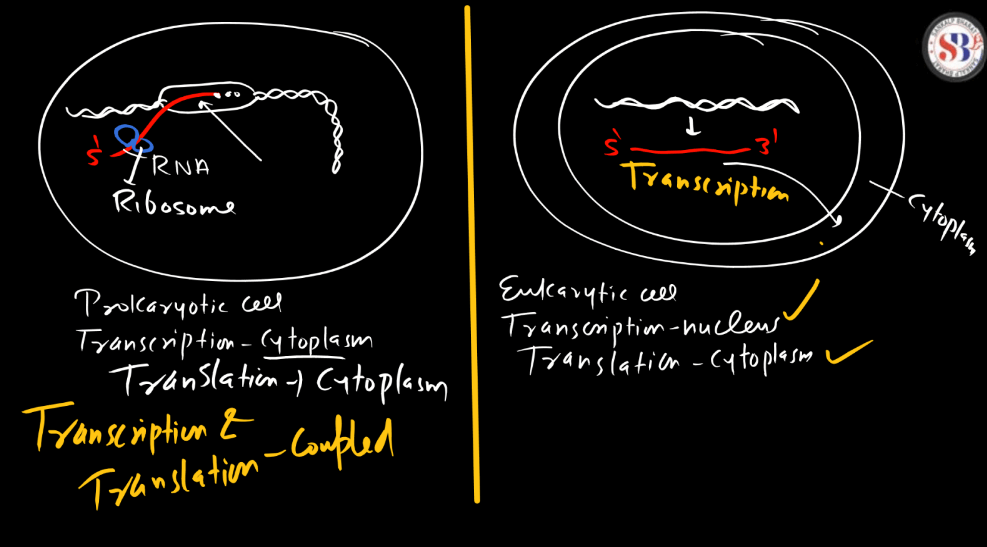
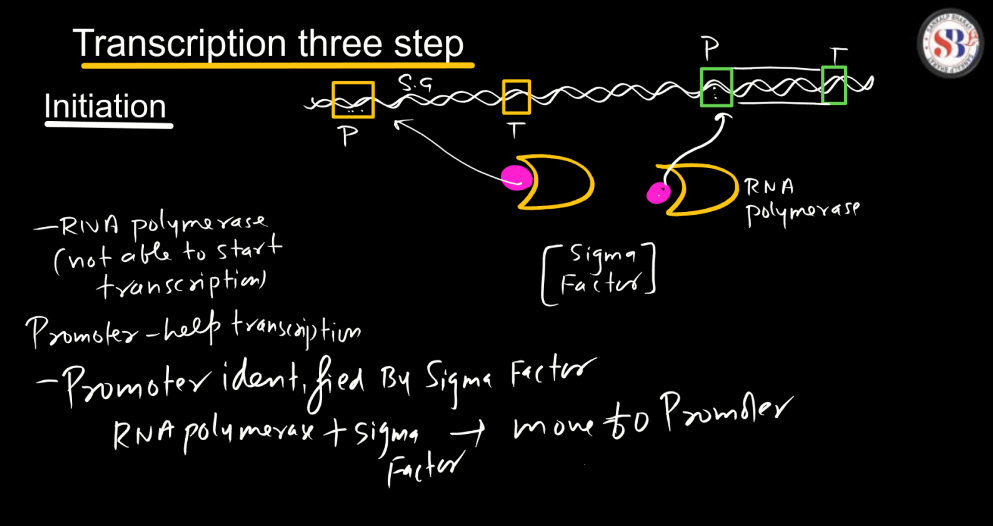
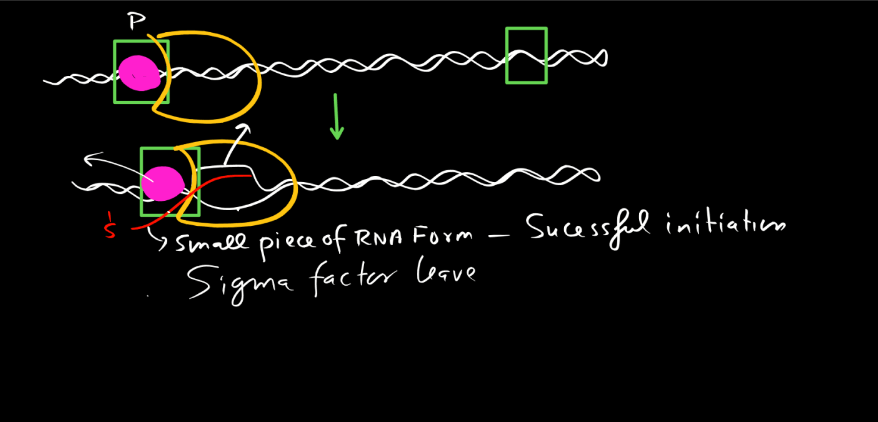
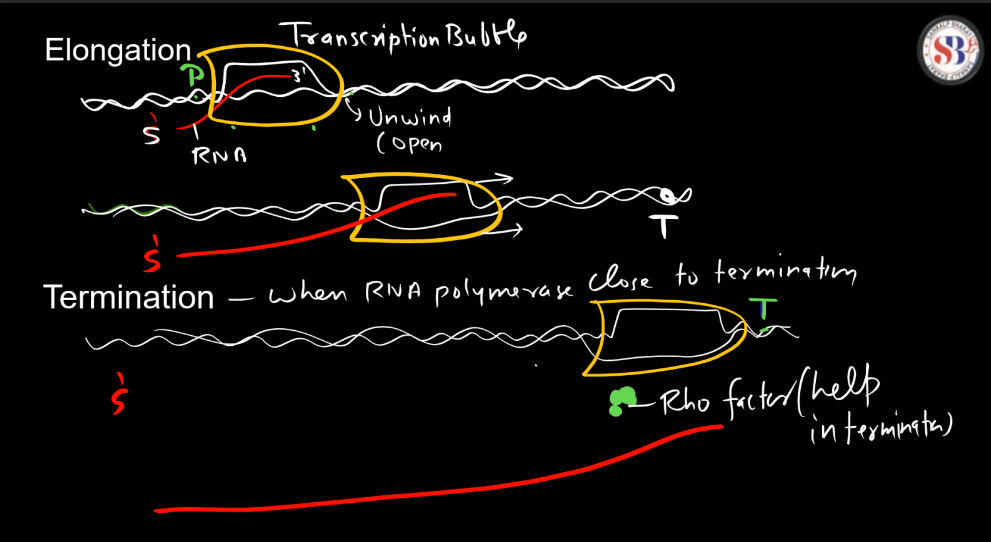
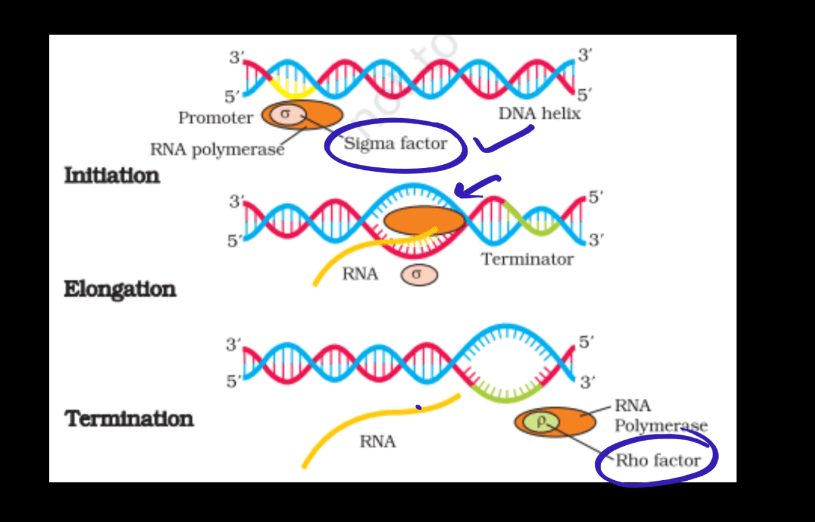
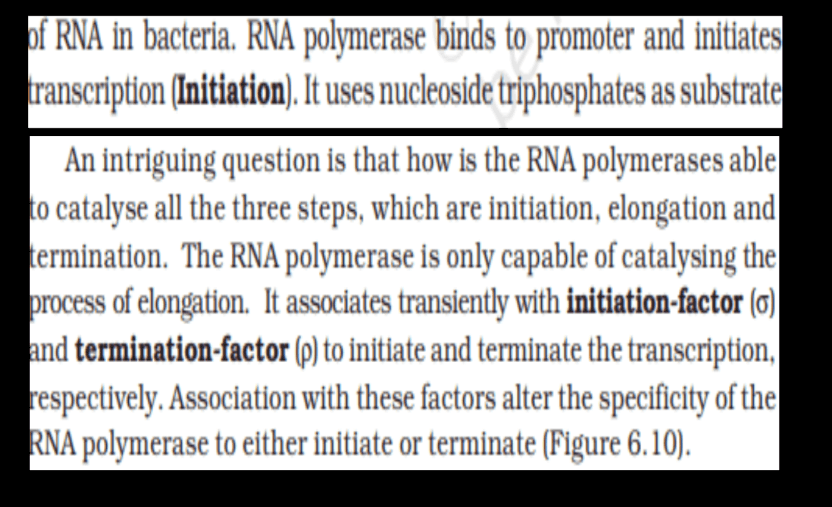
RNA Processing
RNA processing refers to the modifications and alterations that occur to RNA molecules after transcription. This includes processes such as capping, slicing, and polyadenylation in eukaryotic cells. These modifications help in the maturation, stability, and functionality of RNA, preparing it for translation into proteins or fulfilling other cellular functions.
| RNA Processing | |
| Process | Description |
| Capping | Capping, in simple terms, means setting a limit or maximum on something. It’s like putting a cap or boundary to control the highest amount or level allowed for a particular thing. |
| Polyadenylation | Polyadenylation is a process in molecular biology where a sequence of adenine nucleotide (poly-A tail) is added to the end of an mRNA molecule, aiding stability and regulating gene expression. |
| Slicing | Slicing typically refers to the process of dividing or cutting something into smaller, usually uniform, parts. In programming, it’s commonly used to extract specific elements from data structures like lists or strings. |
Types of RNA
There are five main types of RNA namely: mRNA, tRNA, rRNA, snRNA, and scRNA-seq. These five types of RNA work together to carry out the process of protein synthesis, a crucial aspect of cellular function.
| Different Types of RNA | |
| Types | Description |
| Messenger RNA (mRNA) | This type carries genetic information from the DNA in the cell nucleus to the ribosomes in the cytoplasm. The information encoded in mRNA is used as a template for protein synthesis during translation. |
| Transfer RNA (tRNA) | tRNA is responsible for bringing amino acids to the ribosome during protein synthesis. Each type of tRNA is specific to a particular amino acid, and it has an anticodon region that recognizes and pairs with the corresponding codon on mRNA. |
| Ribosomal RNA (rRNA) | Ribosomal RNA (rRNA) is a crucial cellular component responsible for protein synthesis. Found in ribosomes, rRNA facilitates the assembly of amino acids into polypeptide chains during translation in the cell. |
| snRNA | Small nuclear RNA (snRNA) is a type of RNA involved in RNA splicing, a crucial step in gene expression. Found in the cell nucleus, snRNA plays a role in forming spliceosomes. |
| scRNA-seq | Single-cell RNA sequence (scRNA-seq) is a technique that analyzes gene expression at the individual cell level, providing insights into cellular diversity and heterogeneity within complex biological systems. |
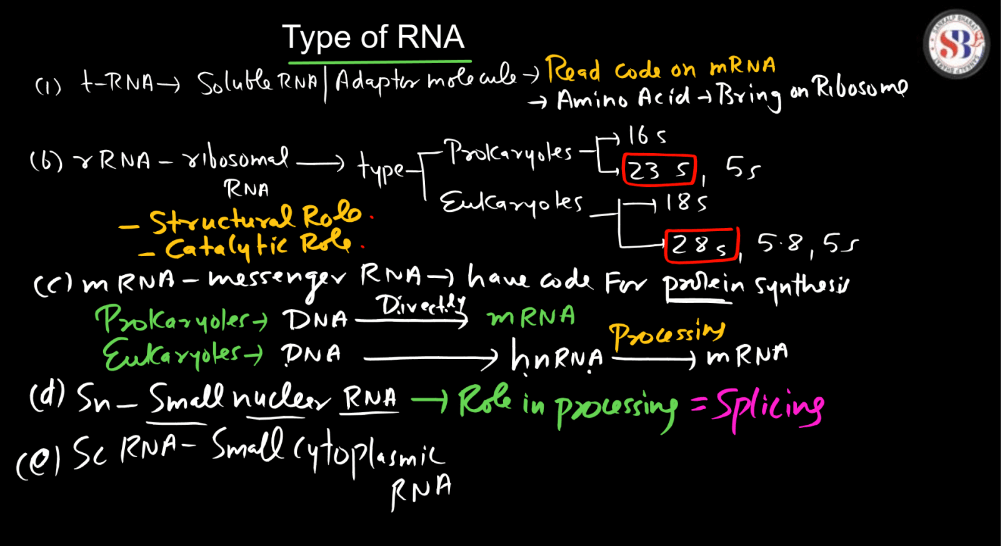
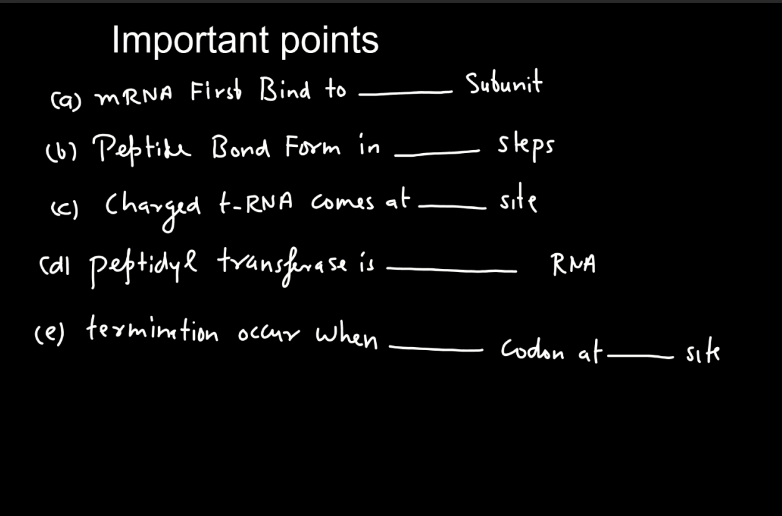

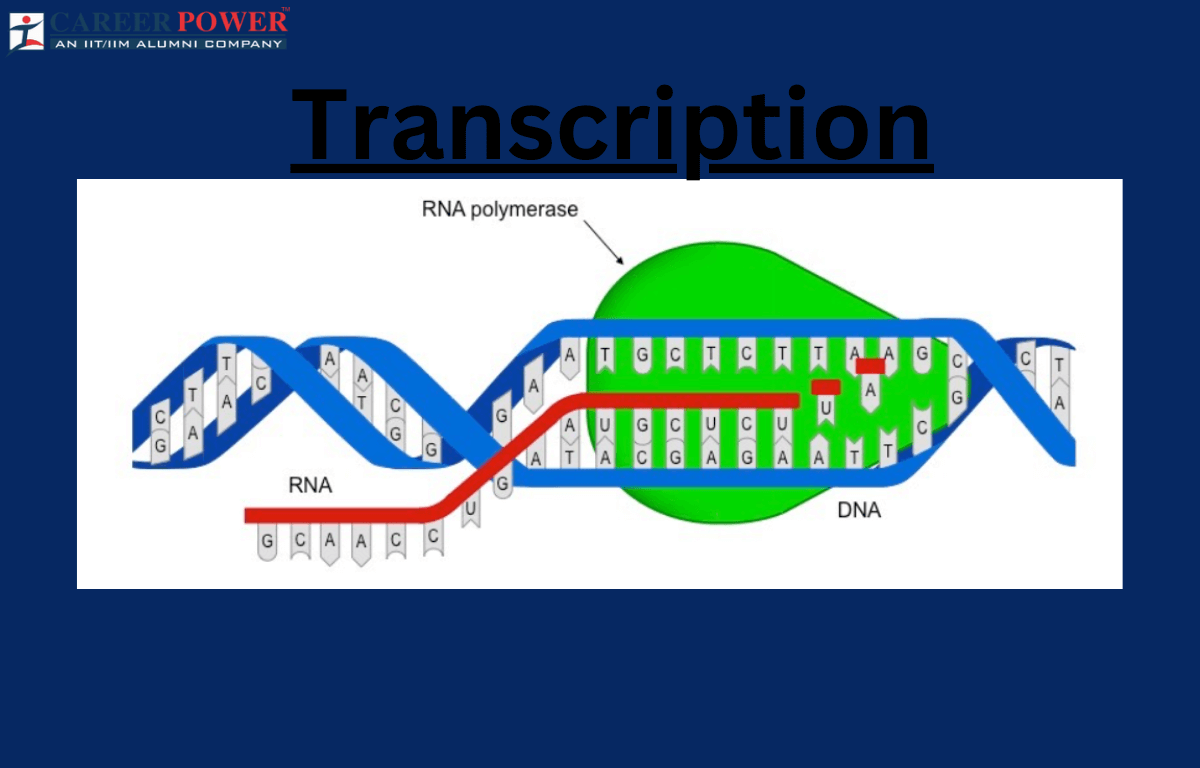

 50 Vegetables Name for Kids in English a...
50 Vegetables Name for Kids in English a...
 Food Chain: Definition, Types, Examples,...
Food Chain: Definition, Types, Examples,...
 Human Respiratory System: Definition, Di...
Human Respiratory System: Definition, Di...













